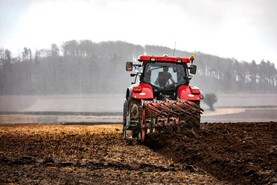Some 16 farm fatalities were recorded by the Health and Safety Authority (HSA) over 2023, accounting for more than a third of all workplace deaths and representing a rise on the sector’s 12 fatalities the year previous.
The forestry and fisheries sectors accounted for a further four fatalities out of the 43 witnessed across all sectors last year.
Half of all farm fatalities were aged 65 or older, which the HSA has stated shows the need for farmers to consider whether suitably trained help is needed before carrying out jobs.
Cork saw the highest number of agriculture, forestry and fishery-related workplace fatalities of any county, with five individuals in Cork losing their lives while working in these sectors last year.
Co Kerry witnessed the second highest number of farm fatalities per county at three.
The HSA will continue to focus “proactive inspections and targeted campaigns” on sectors which show the most risk, including farming, into 2024.
‘High-risk sector’
“Farming, a high-risk sector, continues to account for the highest number of fatalities (37%) with over half of victims aged 65 and over,” assistant chief executive at the HSA Mark Cullen commented on fatality figures.
“We know many farmers are self-employed and often work alone.
“Therefore, there is a clear need for them to consider the work they plan on carrying out themselves, and where they may need assistance from qualified and trained workers, ensuring the appropriate risk assessments are completed in advance of the work being carried out and that the appropriate preventative measures are in place to ensure those carrying out the work can do so safely.”
Cullen reminded the duty holders in workplaces to put preventative measures in place to mitigate safety risks where and when they exist for workers.
Areas of known risk include working with vehicles or machinery and working at heights, while incidents involving being struck by livestock also accounted for four of farming’s fatalities in 2023.
“We are committed to collaboration, consultation and communication with all stakeholders, across all industries and will continue to work with partners in high priority sectors such as agriculture and construction,” he continued.
“We have and will continue to develop supports and resources to address the evolving nature of the work environment including impacts related to psychosocial hazards, digitalisation, sustainability, and changing workforce demographics.”






 This is a subscriber-only article
This is a subscriber-only article










SHARING OPTIONS: